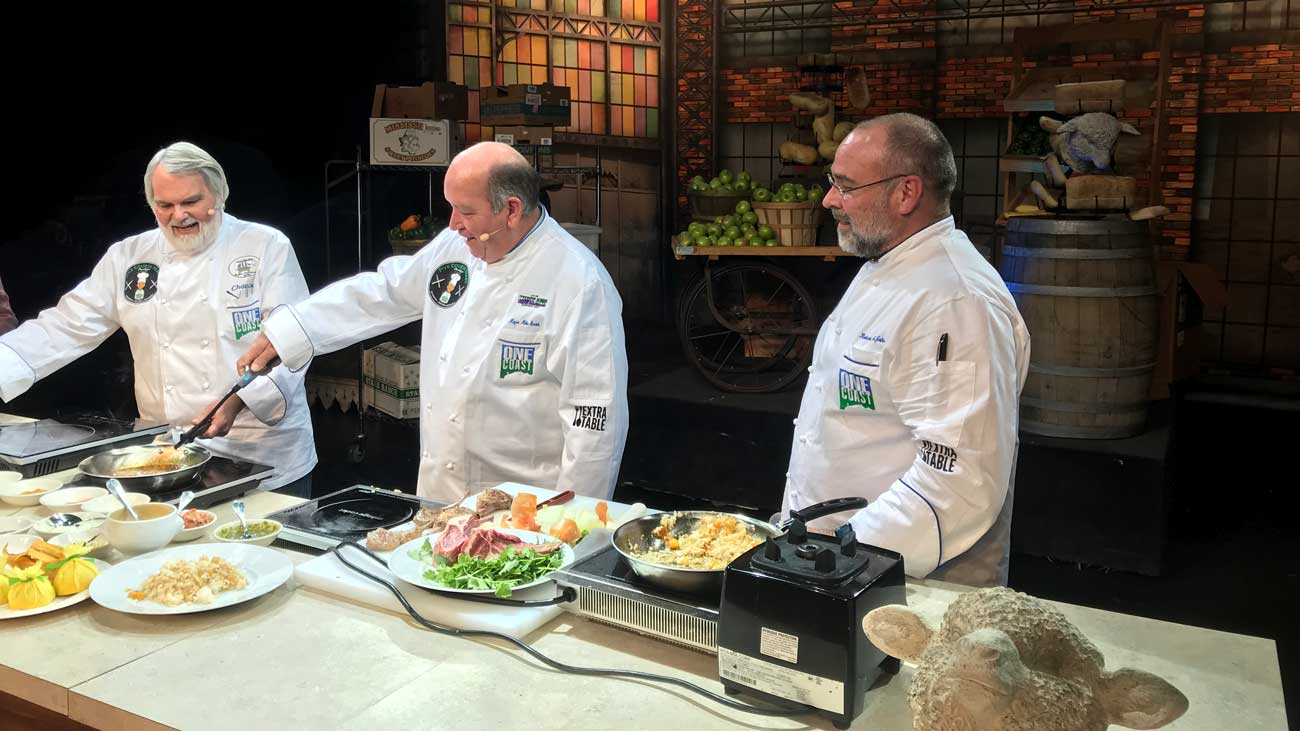The older I get the more I appreciate the simple things in life. As the tire around my gut grows over my belt and the hairs on my head turn loose instead of grey, I find myself gravitating towards uncomplicated things, and coiling away from life’s little dramas. These days, the more I can do to make my life— and the lives of those around me— less complex and compliated, the better.
That is a reversal of sorts from how I lived a decade or so ago. For a short time in my life, bigger was better, more was never enough, and there weren’t enough irons in the fire to ever keep me satisfied. It was that way for food, too. The over-the-top presentations, complicated procedures, and high-end ingredients were what I was attracted to as a restaurateur and a consumer.
Today simpler is better. Today I’m mostly interested in things that are “real.”
That might seem like an overly philosophical preamble for a column about something as simple as pizza, but then you would be underestimating the love and affection that I have for pizza.
A few weeks ago I read a very well written Lucky Peach article by Sascha Bos that listed 12 of the pizza styles served in America. In addition to the typical Chicago deep dish, California-style, New York Neapolitan, Greek, and Dollar Slice, Bos listed such regional classics as Trenton Tomato Pie, D.C, Slice, and St. Louis style. In a follow-up article Bos listed several other pizza styles— Buffalo, Detroit, Colorado, and Ohio Valley among others— that were overlooked in her original dozen.
Within those styles of pizza there are even more sub-styles. As with other foodstuffs, pizza is regional. But within those regions one finds many tastes and preferences. Our taste in pizza develops around what is served in our particular region of the country, but it is also true that the people in those regions— and their personal tastes and preferences— dictate what is served.
There are several factors that delineate one regional pizza from another— crust thickness, type of ingredients, amount of ingredients, cheese on top or sauce on top, the actual size of the slice, and the foldability (my word) of the crust. Bos did a great job dissecting the styles.
I subscribe to the even-bad-pizza-is-still-pretty-good line of thinking. All pizza is personal, and I am a minimalist these days. I like a very thin, crisp crust with a scant covering of tomato sauce and minimal ingredients on top. I prefer buffalo mozzarella (made from water buffalo’s milk) to the standard variety.
The three key components that make a great pizza are: Crust, sauce, and cheese. If one nails each of these three ingredients everything else is gravy.
In 2011, while working overseas on an Italian cookbook, I ate pizza from the southernmost tip of Sicily to the base of the Alps. Pizza varies a little in Italy from north to south, but for the most part Italians subscribe to the less-is-more school of thought. Italian pizza originated in Naples, but my favorite is served in the medieval Tuscan town of Barberino Val d’Elsa at Pizzeria L’Archibugio.
Archibugio is located 30 kilometers south of Florence on the Via Roma (the ancient road that for a thousand or more years has led travelers from Bologna to Rome). The pizza at Archibugio is the best I have ever eaten. The small restaurant is in a building that is over 600 years old with thick stone walls and low ceilings. The al fresco views of the Tuscan hills to the east is as fine a view as one can get in that part of the world. Archibugio is the Italian word for an old-fashioned muzzle-loading rifle. I have no idea what that has to do with pizza, but who cares?
Archibugio pizza is wafer thin. The tomato sauce is pure San Marzano, and I always opt for bufla mozzarella over the standard variety. When finished with a chiffonade of fresh basil it becomes pizza perfection. I add salt and crushed red pepper. The Tuscans don’t use salt when making bread and the same goes for their pizza crust.
Pizza styles vary slightly throughout Italy, but if you encounter an overly thick crust and piled-on ingredients you are likely eating at a tourist trap near a major tourist site. I encounter a lot of people who travel to Italy and complain about the food upon their return. Typically their problem was that they went to the Spanish Steps or the Trevi Fountain and then ate at a restaurant immediately across the street and the food tasted like bad Italian from the United States. That is because they were eating in an establishment where the owners were serving what they thought Americans would want to eat, instead of what the Italians are actually eating.
I have three firm rules for dining in a foreign country. 1.) Never eat at a restaurant within one block of a major tourist attraction (there are a few exceptions, but they are rare). 2.) Never eat at a restaurant that has pictures of the food on the menu. 3.) Never eat at a restaurant whose main menu is in English (if they have an English version behind the counter, that’s ok).
Pizza is like life: Simple is good. For my pizza dollar, less is best.
Margherita Pizza
Pizza is one of the few words that are understood all over the world. For me all pizza begins and ends with margherita. If a pizza joint’s Margherita is good then the other pizzas will be good.
1 each Portion of pizza dough
¼ cup Marinara (or crushed San Marzano tomatoes with a pinch of salt added)
5 slices Fresh buffalo mozzarella, sliced ¼ inch thick
4-5 leaves Fresh basil, chiffonade
Flour as needed
Cornmeal as needed
Preheat a pizza stone at 450 in the oven.
On a floured surface, roll out pizza dough very thin and stretch into a rectangle about 6 inches by 8 inches. Transfer to a pizza peel.
Spread the marinara across the dough. Tear the slices of mozzarella into roughly 1 inch sized pieces. Sprinkle the preheated pizza stone with cornmeal, slide the pizza off of the peel and bake for 8-10 minutes until the edges of the dough begin to brown and the cheese begins to bubble.
Stack the basil leaves on top of each other, roll them up and slice to make the basil chiffonade. Sprinkle over finished pizza.
Pizza Dough
1 (1/4 oz.) Package yeast
1 tsp Honey
1 cup Warm water, 105-115 degrees
3 cups All-purpose flour
2 tsp Kosher salt
1 TB Extra virgin olive oil
Dissolve the honey and yeast in ¼ cup of the water in a small bowl.
Combine flour and salt in the bowl of a stand mixer fitted with the dough hook on low speed. Add the oil, yeast mixture and remaining ¾ cup water and continue mixing until mixture comes cleanly away from the side of the bowl.
Turn the dough onto a clean surface and knead by hand for 2-3 minutes until smooth and firm. Cover with a damp towel and let rise in a cool spot for 2 hours.
Divide the dough into 4 balls, about 6 ounces each. Work each ball by pulling down the sides and tucking under the bottom of the ball. Repeat this 4 or 5 times with each ball. Roll each ball on a clean surface under the palm of your hand until the top of the dough is smooth and firm, about 1 minute.
Cover the dough with a damp towel and let rest 1 hour. The dough can be wrapped and refrigerated for 2 days or frozen at this point.
Yield: 4 7-8 inch pizza crusts
Marinara
¼ cup Extra virgin olive oil
1 ½ cups Diced yellow onion
1 cup Shredded carrot
1 Tbl Minced garlic
1 TB Dried basil
½ TB Dried oregano
3 ea. Bay leaf
2 TB Kosher salt
1 TB Fresh ground black pepper
¾ tsp Crushed red pepper
1 – 6 oz. can Tomato paste
2 – 28 oz. cans San Marzano Italian whole peeled tomatoes, crushed by hand
2 cups Vegetable stock
1 TB Balsamic vinegar
Heat oil over medium heat. Add onions, carrots and garlic. Cook 10 minutes, stirring often.
Add basil, oregano, salt, black pepper, crushed red pepper and tomato paste. Cook 5-6 minutes, stirring frequently, to caramelize tomato paste.
Add canned tomatoes, stock and bay leaves. Simmer on low heat for 1 hour, stirring often.
Add balsamic vinegar and remove heat.
Yield: 1 gallon




